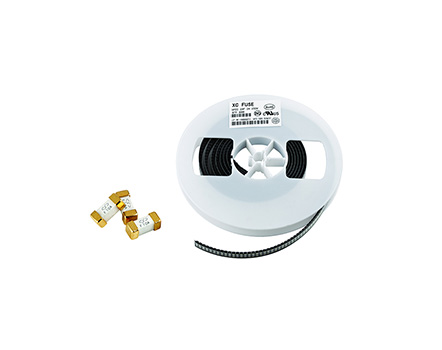
The mobile power supply consists of overcurrent protection devices, batteries, and control charging and discharging circuits. The previous charging and discharging circuits used ICs for overcurrent protection, which were complex, had high failure rates, and high costs. Some users returned or repaired the circuit, and the manufacturer was fined and claimed compensation, which caused great trouble for manufacturers and designers. The above problems must be solved in order to promote their application. The manufacturer has designed many solutions for overcurrent protection, using self recovery fuses, with fewer components, low failure rates, good functionality, and fast overcurrent response The simplest and lowest cost solution for overcurrent protection of mobile power supplies solves the above problems.
The use of self-healing fuses for overcurrent protection in mobile power sources has become the first choice for engineers. Previously, chips were used to control overcurrent for protection, which was costly and had many peripheral components, making it prone to malfunctions. A self-healing fuse can solve the overcurrent protection function with a single device and is responsive. As soon as overcurrent occurs, it is immediately in a protective state, effectively protecting the charged device, battery, and other critical circuits of the mobile power supply itself. Moreover, it can recover on its own, and this excellent performance has been increasingly recognized by engineers. On line, it is sufficient to meet the overcurrent protection function, and layout and wiring are quite simple, reducing production costs.
Originally, only one self-healing fuse element was needed to solve the aging problem. The self-healing fuse can be connected in series to the battery output power supply line. As long as there is an excessive current during internal or external charging and discharging, the self-healing fuse can be timely protected, and the battery and peripheral equipment will not burn out. Self restoring fuse, also known as self resetting overcurrent protector, also known as ten thousand times fuse, also known as recoverable overcurrent protector or polymer self restoring fuse. During normal operation, the resistance value is very low and does not affect the operation of the circuit. When the motor is overloaded or rotated, a large current is generated, causing the self restoring fuse to change from low resistance to high resistance, limiting the current of the motor and achieving the purpose of protecting the motor and system. After a power outage, the self recovery fuse returns to low resistance, and the air pump returns to normal state. Whether using a plug-in self recovery fuse or a patch based self recovery fuse, timely protection can be achieved.
Read recommendations:
bimetal thermostat working principle
are plastic fuse boxes legal.The Price Trend and Future of Fuses
eve temperature balancing mattress protector.Principles for selecting fuses and fuses